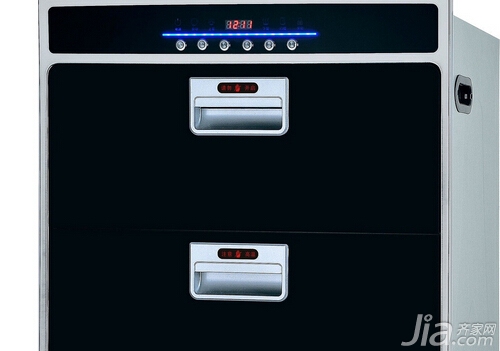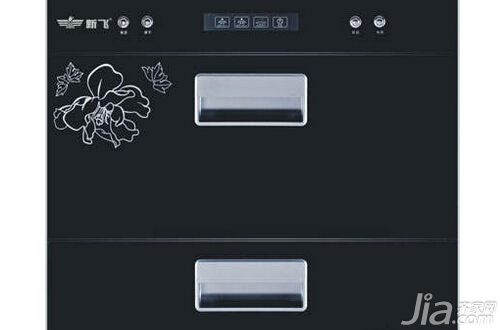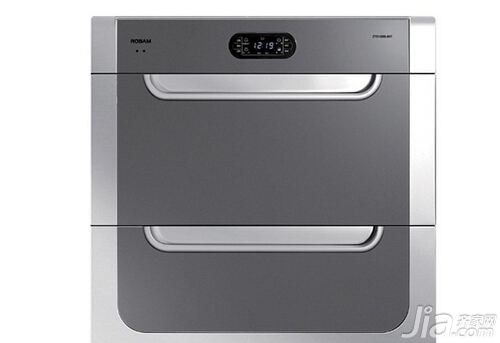Is the ultraviolet disinfection cabinet good? Many people have purchased a disinfection cabinet for their homes. After learning about how it works, they often wonder: is the ultraviolet disinfection cabinet effective and reliable? What's the actual disinfection performance?
To better understand the functionality of an ultraviolet disinfection cabinet, it's helpful to first look at how standard disinfection cabinets operate. Most models use one of two main methods for sterilization: high-temperature or ultraviolet (UV) light. Each has its own advantages and limitations, depending on what you're looking for in a kitchen appliance.

1. How does an ultraviolet disinfection cabinet work?
The core principle of UV disinfection is that ultraviolet light damages the DNA of bacteria, viruses, and other microorganisms, preventing them from reproducing or killing them altogether. The most effective wavelength for this process is 253.7nm, which is strongly absorbed by DNA molecules. This method can achieve a kill rate of over 99%, provided the correct exposure time and intensity are used.
However, the effectiveness of UV disinfection depends on the dosage, which is the product of the light intensity and the exposure time. While higher doses generally result in more bacteria being killed, the percentage doesn't always increase linearly. Even small doses can eliminate some microbes, but if there are too many, even a strong dose may not be enough to fully disinfect the area.

UV disinfection cabinet - pros and cons
One major limitation of UV disinfection is that ultraviolet rays only travel in straight lines and have limited penetration power. This means they can only kill microorganisms that are directly exposed to the light. In a typical cabinet, dishes and other items may block the UV rays, leaving some areas unexposed. As a result, bacteria in those shadowed regions may survive. According to national standards, tableware disinfection cabinets should not rely solely on UV for sterilization.
Additionally, UV light is harmful to human eyes and skin. However, most cabinets are designed with safety in mind, using materials like glass that block UV transmission. This makes them relatively safe for home use. That said, if you can see UV light leaking from any part of the cabinet, it’s important to stop using it immediately and have it repaired.

2. How does a high-temperature disinfection cabinet work?
High-temperature disinfection involves heating the interior of the cabinet to 100°C for at least 15 minutes. This heat denatures the proteins in bacteria and viruses, effectively killing them. Most high-temperature models use infrared heating elements to distribute heat evenly.
Types of high-temperature disinfection cabinets
These cabinets are usually classified into one-star and two-star models based on their sterilization efficiency. A one-star model typically reaches temperatures above 100°C, killing common bacteria like E. coli and Staphylococcus aureus with a 99.9% kill rate, but it may not be effective against viruses like hepatitis B. A two-star model, on the other hand, heats up to over 120°C, which can kill more dangerous pathogens, including hepatitis B and poliovirus. However, it still cannot eliminate certain chemical toxins or rare viruses.
Disadvantages of high-temperature disinfection
Despite its effectiveness, high-temperature disinfection has some drawbacks. It requires significant energy, which can lead to uneven heating. Prolonged exposure to high heat may also damage the cabinet’s structure, seals, and the items inside. Additionally, components like the control panel and handles can become dangerously hot, posing a risk of burns.
In summary, after understanding the working principles of both UV and high-temperature disinfection cabinets, it's clear that each has its own strengths and weaknesses. UV models are convenient and energy-efficient, while high-temperature models offer stronger sterilization. Depending on your needs, either could be a great choice for your kitchen.
What, the decoration still uses his own money? ! The Qi family is decorated in installments, with an ultra-low annual interest rate of 3.55% and a maximum loan of 1 million. Apply now to enjoy the discount
If you are interested in brand cooperation, content collaboration, and advertising on this website, please send an email to:
Disinfection cabinet kitchen appliance glass
Material: Indoor ceramic flowerpots are crafted from clay that has been fired at high temperatures, resulting in a sturdy yet porous material. Ceramic pots offer excellent breathability for plant roots and come in a variety of finishes, including glazed or unglazed options.
Size and Shape: These flowerpots come in a diverse range of sizes to accommodate different types of indoor plants, from tiny pots for succulents to larger ones for house trees or ferns. Shapes vary widely, encompassing classic round or cylindrical pots, square or rectangular containers, or more unique shapes like oval, hexagonal, or even abstract designs.
Design and Style: One of the hallmarks of indoor ceramic flowerpots is their aesthetic appeal. They are available in countless designs and styles to complement various interior décor themes. These pots may feature intricate patterns, vibrant colors, minimalist designs, or textured surfaces, adding visual interest to indoor plant displays.
Drainage Holes: Adequate drainage is crucial for the health of indoor plants, so most ceramic flowerpots come with drainage holes at the bottom. This prevents water from pooling at the bottom of the pot, reducing the risk of root rot. Some pots also include saucers to catch excess water and protect indoor surfaces.
Weight: Ceramic flowerpots tend to be heavier than plastic or fiberglass alternatives, providing stability for indoor plants. While this weight offers security, it may also make larger pots more challenging to move around. However, smaller ceramic pots are typically lightweight and manageable.
Maintenance: Indoor ceramic flowerpots require minimal maintenance but benefit from occasional cleaning to remove dust, dirt, or water stains. A gentle wipe with a damp cloth or sponge is usually sufficient. Avoid using abrasive cleaners or harsh chemicals that could damage the glazed surface.
Cost: The cost of indoor ceramic flowerpots varies depending on factors like size, design intricacy, and craftsmanship. While they may be more expensive than plastic or terra cotta pots, their durability, aesthetic appeal, and contribution to indoor décor make them a worthwhile investment for many indoor gardeners.
Overall, indoor ceramic flowerpots blend functionality with beauty, serving as elegant vessels for indoor plants while enhancing the ambiance of any interior space. Their versatility in design and size makes them a popular choice for adding greenery and style to homes, offices, or other indoor environments.
Indoor Ceramic Flower Pot , cultivating plants inside homes, container for house plants
Yixing Bocai Pottery Co.,Ltd , https://www.bocaipottery.com